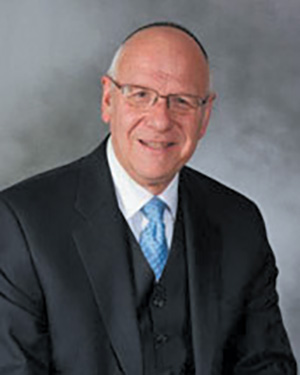Parshat Teruma
“V’asu li mikdash v’shachanti b’tocham”
“V’shachanti b’toch Bnei Yisrael”
The selection of the fifth and sixth chapters of Sefer Melachim as the haftarah for Shabbat Parshat Teruma requires little explanation. This week’s Torah reading calls for the construction of the Mishkan, the Tabernacle, with the words “V’asu li Mikdash v’shachanti b’tocham,” “And they shall construct a sanctuary for me and I shall dwell in their midst,” while the haftarah closes the description of the construction of the first Beit Hamikdash with the words “V’shachanti b’toch Bnei Yisrael,” “And I shall dwell among Bnei Yisrael.” The parsha describes the utensils and appurtenances that would be used in the Mishkan, and the haftarah details the utensils and appurtenances that would be used in the Holy Temple.
Nonetheless, we are struck by the contrast between the two undertakings and we may even be troubled by these differences. In discussing the construction of the Mishkan, the Torah speaks of an undertaking that took some months to complete and tells of the voluntary donations brought by the people to complete the project. In discussing the construction of the Mikdash, the haftarah describes a task that took over seven years and was “financed” by a compulsory tax imposed by Shlomo Hamelech, a forced labor that involved over 150,000 workers as well as the importation of precious metals and fine wood from abroad. The construction of the Mishkan would appear to have been the result of the religious fervor that took hold of the Israelites, while the Mikdash seems to be a result of governmental decree and no more.
We are right to be puzzled, if not perhaps upset.
But we would be wrong.
These two different endeavors, similar as they may have been, took place under very different conditions and unique challenges that required different approaches and diverse solutions.
The Mishkan was a relatively small religious center made to serve a nomadic population that was concentrated as one in a limited space. Calling the people to respond to the challenge required a simple public declaration. Perhaps the announcement was accompanied by the sounding of the shofar or the trumpets, or perhaps it simply involved gathering those responsible for completing the task and having them spread the news to gather the necessary artisans and craftsmen.
The Mikdash, however, was a far greater undertaking. The leadership faced the challenge of involving a far-flung population with differing concerns and priorities. Almost 500 years had passed since the construction of the Mishkan, and Shlomo HaMelech had to provide for a far greater population than that of the desert generation. The imposition of compulsory taxation succeeded in involving the entire population in the divinely ordained project, both through the donation of funds and personal participation, something that would have been nearly impossible had the request been made by a public declaration.
Furthermore, the entire undertaking had been started by the former king, David HaMelech, who gathered precious metals, wood and stone for the building and even divided the Levi’im and the kohanim into their respective “watches” of service in the Temple (see Divrei HaYamim A: 22 [entire perek]). The people, therefore, were made aware of the religious imperative to build the Mikdash, just as the desert generation was taught the same by Moshe Rabbeinu. It was this awareness, as well as the national participation in the construction projects, that led Israel to the realization that the real goal is not the successful building of a physical structure but the seeing to it that Hashem dwell in the heart of each and every one.
Our haftarah, therefore, is a welcome reminder that every generation faces their own unique challenges, and that outstanding, divinely inspired leaders are required to see that Hashem’s mitzvot are followed and are meaningful in all times.
And, mostly, to challenge the people to carry God in their very souls…
“Bilvavi Mishkan evneh, I shall build a Mishkan in my very heart.”
Rabbi Neil Winkler is the rabbi emeritus of the Young Israel Fort Lee and now lives in Israel.










